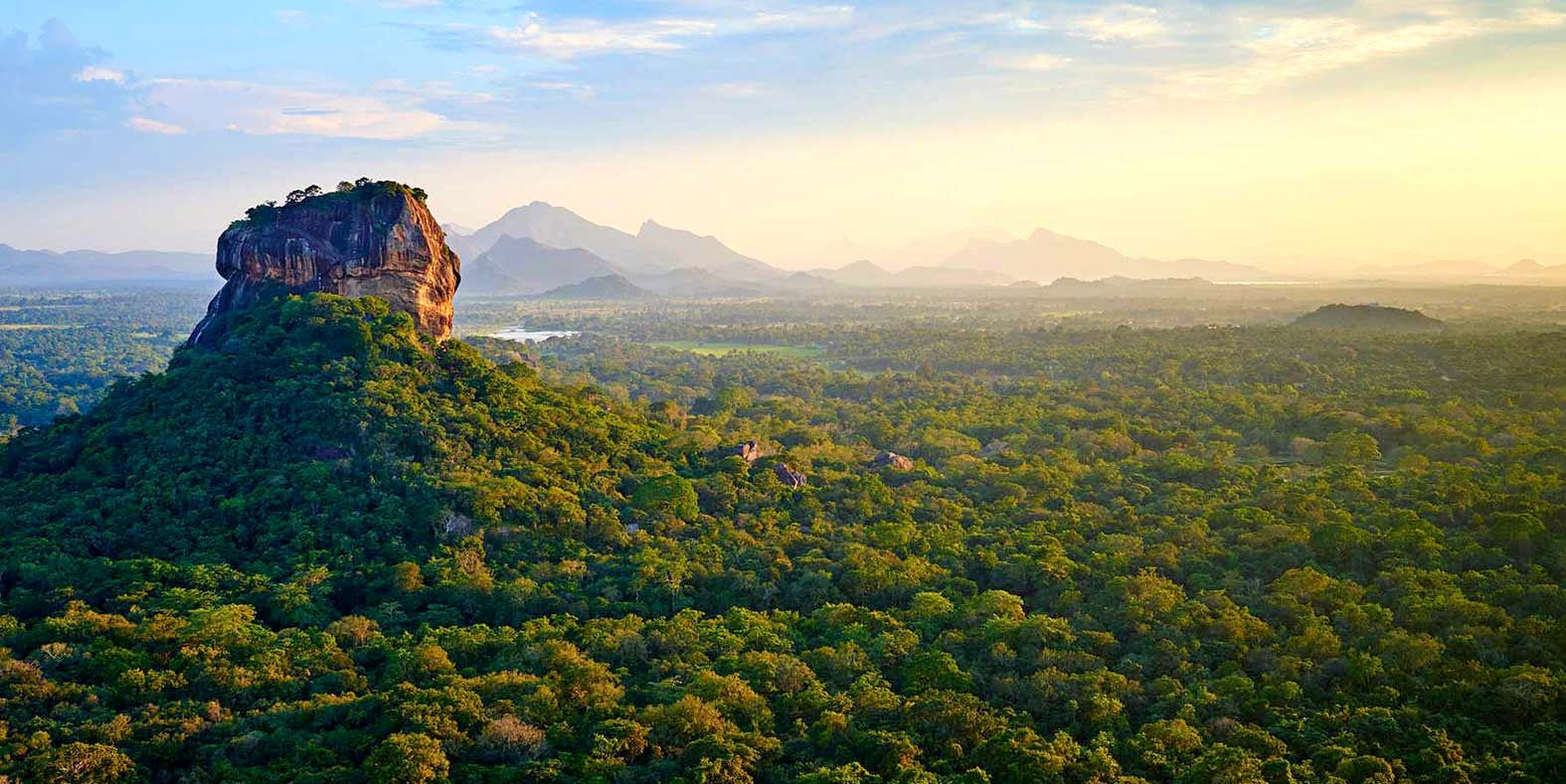Shopping in Pettah Floating Market
The Pettah Floating Market in Colombo is a distinctive and vibrant shopping destination that offers a unique experience for visitors and locals alike. Situated in the heart of the city, this market is set on a series of floating platforms on the Beira Lake, making it one of the most picturesque marketplaces in Sri Lanka.
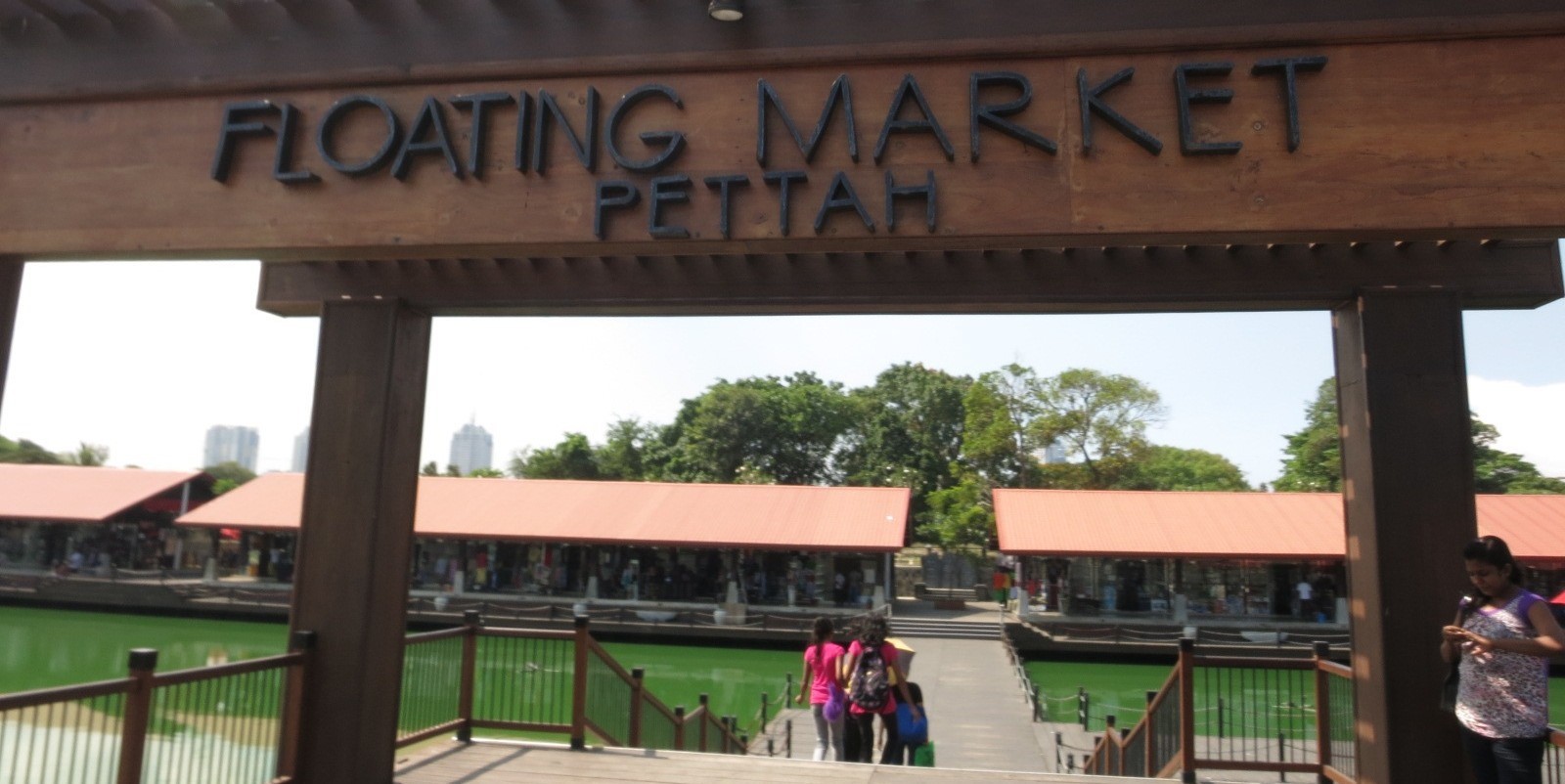
What to Expect: When you visit the Pettah Floating Market, you can expect a bustling atmosphere filled with a variety of goods and local crafts. The market is known for its array of stalls that sell everything from fresh produce and local street food to clothing, electronics, and souvenirs. The setting is quite scenic, with the calm waters of the lake providing a beautiful backdrop to the colorful stalls.
Shopping Experience: Shoppers at the Pettah Floating Market can enjoy browsing through a diverse selection of items. It's a great place to find traditional Sri Lankan goods, such as handmade crafts, batik fabrics, and jewelry. The market is also a good spot to pick up inexpensive clothing and accessories. Additionally, there are numerous vendors offering local snacks and refreshments, allowing visitors to sample traditional Sri Lankan street food.
Cultural Atmosphere: The market not only serves as a shopping venue but also as a cultural hub. It reflects the lively, eclectic nature of Colombo and provides insight into the daily lives of the locals. Walking through the market, you can hear a mix of languages and see a variety of local customs, making it a rich cultural experience.
Tips for Visitors
-
Bargaining: Negotiating prices is common at the Pettah Floating Market, so don't hesitate to bargain with vendors to get the best deals.
-
Visit in the Evening: The market is particularly beautiful in the late afternoon and evening when the setting sun casts a golden glow over the lake.
-
Explore Nearby Attractions: The market's central location in Colombo makes it easy to combine your visit with other nearby attractions, such as the Pettah streets and markets, which are just a short walk away.
-
Transportation: The market is accessible by tuk-tuk, bus, or taxi from most parts of the city, making it convenient for visitors.
Visiting the Pettah Floating Market is more than just a shopping trip; it's an immersion into the vibrant culture and daily life of Colombo. Whether you're looking for unique souvenirs, tasty treats, or simply a picturesque stroll, this market is a must-visit spot in your Sri Lankan itinerary.
Ayurvedic Spa
An Ayurvedic Spa in Sri Lanka offers a serene and holistic retreat for those seeking wellness and relaxation. Rooted in an ancient Indian system of medicine, Ayurveda focuses on balancing the body, mind, and spirit to promote overall health and longevity. Sri Lanka, with its rich tradition in Ayurvedic practices, provides an authentic setting for such rejuvenating experiences.
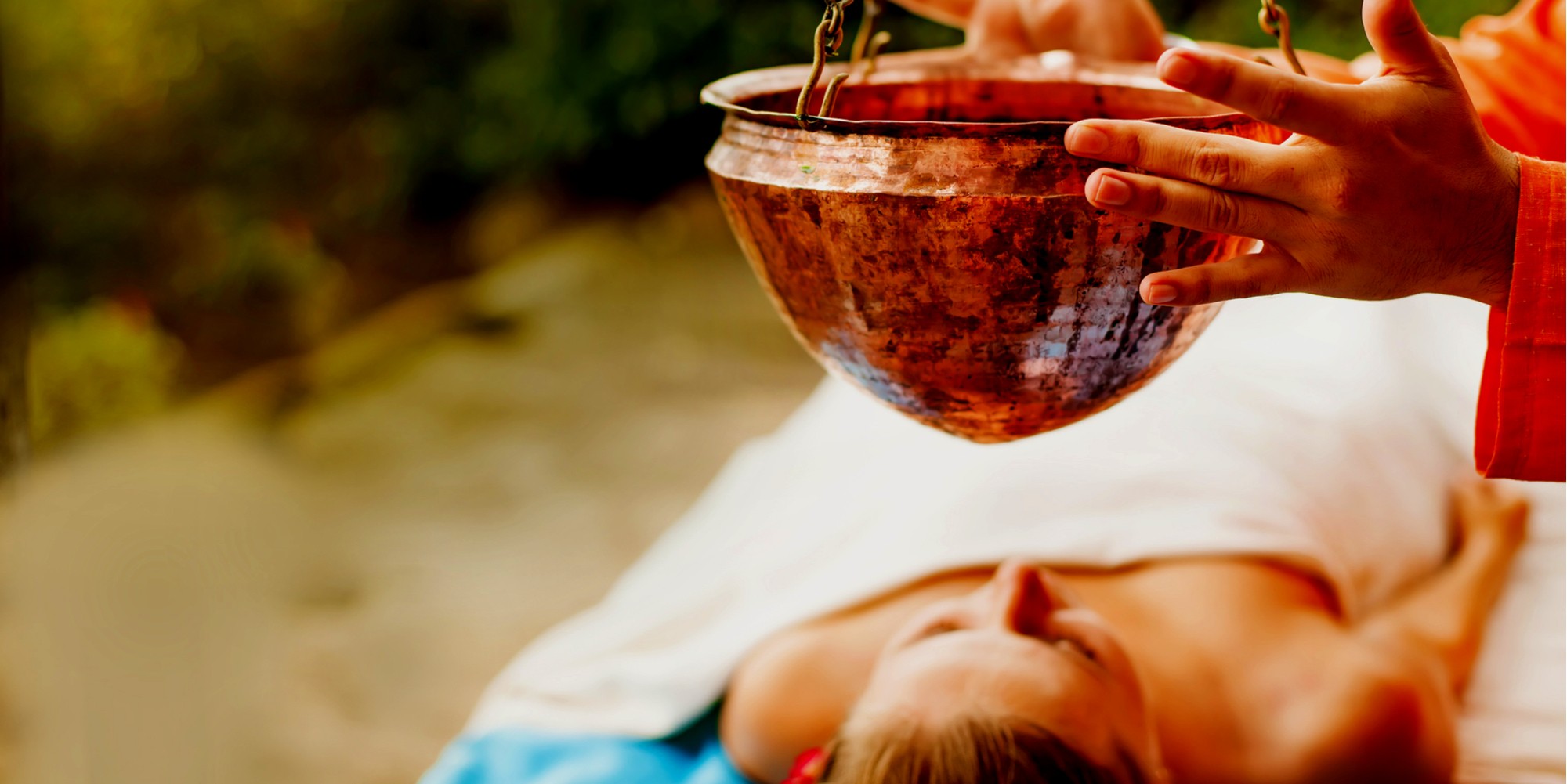
What is Ayurveda? Ayurveda is a traditional form of medicine that has been practiced for thousands of years in India and Sri Lanka. It is based on the principle of maintaining balance among the body’s three doshas (vata, pitta, kapha), which are energy types that constitute one’s physical and mental constitution. Ayurvedic treatments are comprehensive and often include herbal remedies, dietary adjustments, massages, and detoxification techniques.
Experiences at an Ayurvedic Spa
Visiting an Ayurvedic spa in Sri Lanka is a deeply soothing and curative experience that can include:
-
Consultation with an Ayurvedic Doctor: Most reputable spas will start with a consultation from an Ayurvedic practitioner who assesses your dosha type and prescribes specific treatments tailored to your needs.
-
Ayurvedic Treatments: Common treatments include Shirodhara (a technique that involves gently pouring liquids over the forehead), Abhyanga (a full-body massage using warm herbal oils), and Pinda Sweda (a treatment using warm poultices filled with herbs).
-
Herbal Steam Baths: These steam baths often use a combination of aromatic herbs that help detoxify the body and promote a sense of wellbeing.
-
Yoga and Meditation: Many Ayurvedic spas also offer yoga and meditation sessions to complement the physical treatments, enhancing both physical flexibility and mental peace.
Benefits of Ayurvedic Spa Treatments
The benefits of undergoing treatments at an Ayurvedic spa are manifold:
-
Stress Reduction: The natural techniques and herbal treatments significantly reduce stress and promote relaxation.
-
Detoxification: Many therapies are designed to purify the body of toxins, which can improve health and vitality.
-
Immune System Boost: The holistic approach of Ayurveda can help strengthen the immune system.
-
Pain Relief: Treatments like massages and herbal baths can alleviate chronic pain and inflammation.
-
Improved Circulation: Many massages and oil treatments enhance blood circulation, which is crucial for overall health.
Choosing the Right Spa
When selecting an Ayurvedic spa in Sri Lanka, consider:
-
Accreditations and Reviews: Look for spas that are certified and have positive reviews from previous visitors.
-
Range of Treatments: Ensure the spa offers a wide range of Ayurvedic treatments and customizes them according to individual needs.
-
Environment: The setting should be tranquil and conducive to relaxation and healing.
An Ayurvedic spa experience in Sri Lanka isn’t just a treat for the body but a rejuvenation for the soul, offering a unique way to experience the local culture while enhancing your health and well-being. It’s a must-do for anyone visiting this beautiful island looking to unwind and restore balance.
Enjoy the nightlife in Colombo
Experiencing the nightlife in Colombo offers a vibrant and exciting glimpse into the urban culture of Sri Lanka. The city comes alive after dark, boasting a range of entertainment options from bustling nightclubs and chic bars to live music venues and elegant lounges. Whether you're looking to dance the night away, enjoy a quiet drink, or simply soak in the local atmosphere, Colombo has something to offer everyone.

Top Nightlife Experiences in Colombo
-
Nightclubs: Colombo hosts some of the most energetic nightclubs in the region. Places like Clique and R&B are popular among both locals and tourists, offering great music, from international beats to local favorites, and a lively dance floor.
-
Bars and Pubs: For a more laid-back evening, check out some of the city’s trendy bars and pubs. The Love Bar at Flamingo House is a favorite for its quirky décor and innovative cocktails, while The Steuart by Citrus offers a classic pub experience with a great selection of beers and pub food.
-
Rooftop Bars: Enjoy the tropical evening air at one of Colombo’s rooftop bars. ON14 Rooftop Bar & Lounge at OZO Colombo offers spectacular views of the Indian Ocean alongside cocktails and live DJ sets. Sky Lounge at the Kingsbury Hotel is another top spot, known for its stunning skyline views and elegant ambiance.
-
Live Music: If live music is what you seek, Barefoot Garden Café frequently hosts live bands that play a range of music styles from jazz and blues to indie and pop. It's a perfect spot for those who enjoy listening to music in a more intimate setting.
-
Cultural Shows: For a taste of local culture, enjoy a dinner show at Colombo Fort Café, where you can witness traditional Kandyan dance performances while dining on delicious Sri Lankan cuisine.
-
Casinos: For those feeling lucky, Colombo’s casinos offer a night of thrill and games. Bally’s Casino and Bellagio Colombo are popular spots with a range of table games and slot machines, plus regular entertainment and fine dining options.
Whether you're a night owl or just looking to experience the local culture, Colombo's nightlife offers a fun and diverse scene that promises memorable nights for all types of travelers.
Enjoy the Cruise Trip
Enjoying a cruise trip in Sri Lanka is an exceptional way to experience the scenic beauty and tranquil waters surrounding this island nation. Whether you're interested in a luxurious day cruise along the coast or a more adventurous multi-day sailing experience, there are plenty of options to suit all tastes and preferences.
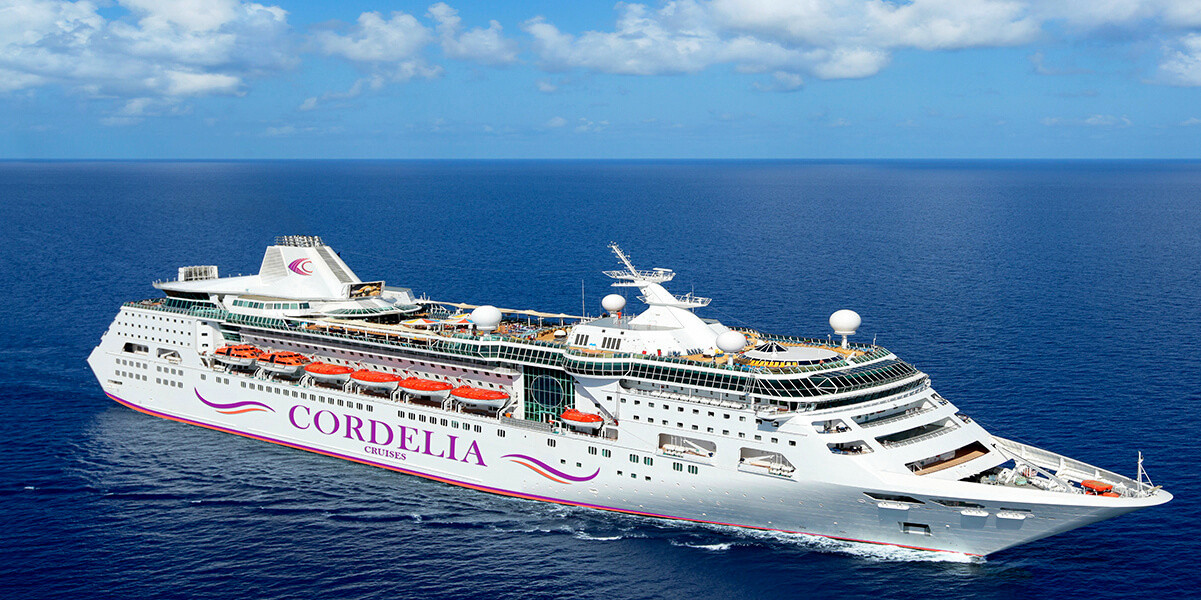
Types of Cruise Trips in Sri Lanka
-
Day Cruises: These are perfect for those who want a taste of the sea without committing to a longer voyage. Day cruises often explore the coastal areas around Colombo, Galle, and Negombo, providing guests with stunning views of the coastline, opportunities for dolphin and whale watching, and sometimes even snorkeling.
-
Sunset Cruises: Ideal for couples or anyone looking to enjoy a romantic evening, sunset cruises offer breathtaking views of the sun dipping below the horizon. These often include dinner and drinks, making for a memorable and picturesque dining experience.
-
Whale Watching Cruises: Sri Lanka's southern coast is one of the best places in the world for whale and dolphin watching, particularly around Mirissa. These cruises are seasonal, running from November to April, offering the chance to see these majestic creatures in their natural habitat.
-
Multi-Day Sailing Adventures: For the more adventurous, several companies offer multi-day sailing trips that can take you to less accessible parts of the island's coastline or even to nearby islands. These trips often include meals, accommodation on board, and stops at various points of interest.
-
Luxury Cruises: For those seeking a touch of luxury, there are several options for high-end cruises equipped with fine dining, elegant cabins, and a variety of onboard entertainment and activities. These cruises offer a more refined way to explore the natural beauty of Sri Lanka's marine environment.
What to Expect on a Cruise Trip
-
Scenic Views: Enjoy panoramic views of the lush coastline, sandy beaches, and possibly even historical sites like Galle Fort from the deck.
-
Marine Life: The waters around Sri Lanka are rich with marine life, including dolphins, whales, and a variety of sea birds.
-
Cultural Touches: Some cruises incorporate local culture into the experience, offering Sri Lankan cuisine and sometimes even cultural performances on board.
-
Recreational Activities: Depending on the cruise, there may be opportunities for snorkeling, diving, or fishing during stops.
A cruise trip in Sri Lanka offers a unique perspective of the island’s stunning natural beauty and a chance to relax and unwind on the open water. Whether it's for a few hours or several days, it's an experience not to be missed for those visiting Sri Lanka.
Wildlife Safari in Kaudulla National Park
A wildlife safari in Kaudulla National Park offers a thrilling opportunity to observe some of Sri Lanka’s diverse wildlife in their natural habitat. Located in the North Central Province of Sri Lanka, Kaudulla is a popular destination for wildlife enthusiasts and nature lovers alike. It's renowned for its large gatherings of Asian elephants, which are among the park's main attractions.
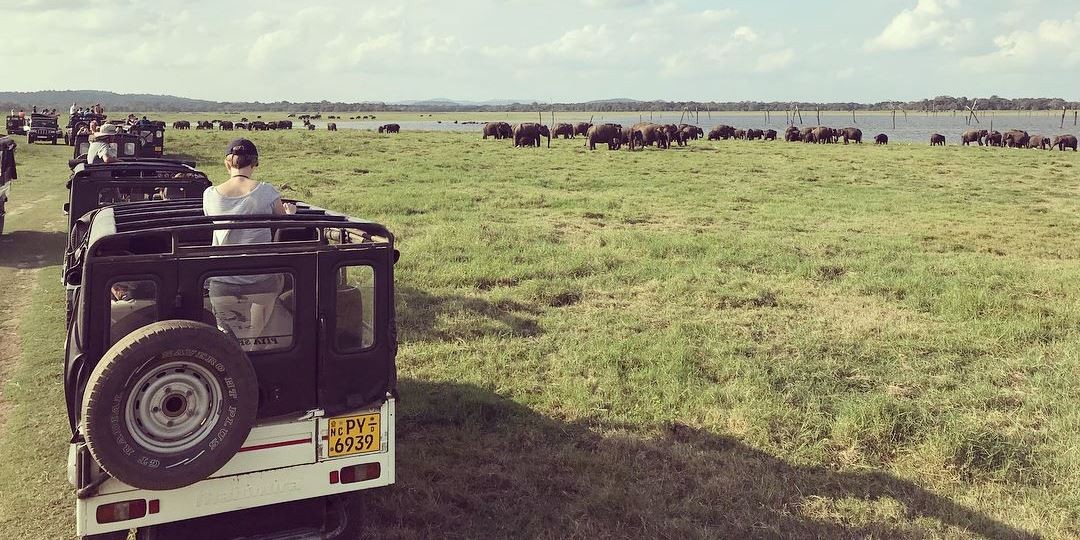
Key Highlights of Kaudulla National Park
-
Elephant Gatherings: Kaudulla National Park is part of the elephant corridor between Somawathiya Chaitiya Park and Minneriya National Park, making it a prime spot for seeing large herds of elephants, especially during the dry season from June to September when they gather around the reservoir.
-
Bird Watching: The park is also a haven for bird watchers, with over 160 species recorded. It's home to a variety of endemic and migratory birds, including large waterbirds like the grey heron, painted stork, and the rare lesser adjutant.
-
Other Wildlife: In addition to elephants and birds, Kaudulla hosts other wildlife species such as sambar deer, spotted deer, wild boar, Sri Lankan sloth bear, and occasionally leopards, providing a full safari experience.
-
Jeep Safaris: Jeep safaris are the most popular way to explore the park. These vehicles are well-suited for navigating the rugged paths and offer a safe way to get close to the animals while maintaining a respectful distance.
-
Photography Opportunities: With its rich biodiversity and stunning natural landscapes, Kaudulla is a fantastic location for wildlife photography. The open settings around the reservoir offer clear views for capturing wildlife in their natural behaviors.
Tips for Visiting Kaudulla National Park
-
Best Time to Visit: The best time to visit for elephant sightings is during the dry season, from June to September, when large herds are likely to be seen near the water sources. However, the park is open year-round and offers different attractions in each season.
-
Safari Times: Safaris usually take place early in the morning or late in the afternoon when the wildlife is most active. It's advisable to book a safari that aligns with these times for the best wildlife viewing experiences.
-
Responsible Tourism: Always choose a safari operator who practices responsible tourism. This means maintaining a safe distance from the wildlife, keeping noise to a minimum, and not leaving any litter behind.
-
Prepare for the Outdoors: Wear comfortable clothing and bring binoculars, a camera, sunscreen, and a hat. It can also be useful to have a light raincoat, depending on the season.
-
Local Guides: Employing a local guide can enhance your safari experience as they are knowledgeable about the park’s ecology, animal behaviors, and the best spots for wildlife viewing.
A safari in Kaudulla National Park is more than just an adventure; it’s a chance to connect with nature and witness the majestic beauty of Sri Lanka’s wildlife. Whether you’re a seasoned naturalist or a curious traveler, the park’s rich ecosystems and spectacular wildlife gatherings are sure to provide a memorable experience.
Snorkeling
Snorkeling in Sri Lanka offers an exciting opportunity to explore the vibrant underwater world surrounding this island nation. With its warm tropical waters, extensive coral reefs, and diverse marine life, Sri Lanka provides some of the best snorkeling experiences in the Indian Ocean.
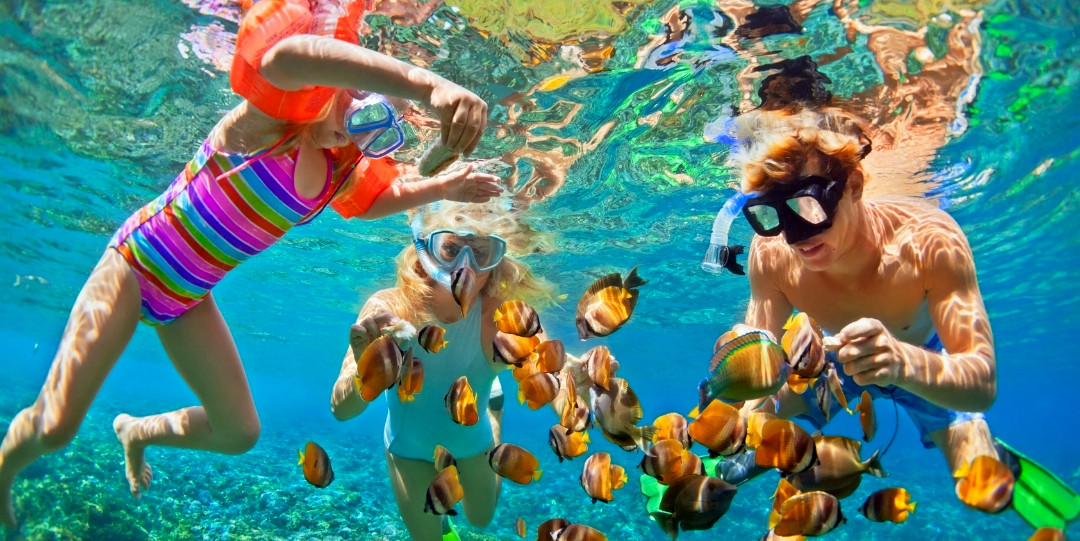
Prime Snorkeling Locations in Sri Lanka
-
Hikkaduwa: One of the most popular snorkeling spots, Hikkaduwa National Park features clear waters and abundant coral reefs that are teeming with colorful fish and marine life. The area is well-equipped with facilities and guides, making it ideal for beginners and experienced snorkelers alike.
-
Pigeon Island National Park: Located off the coast of Trincomalee, Pigeon Island is famed for its powdery white sands and crystal-clear waters. The coral reef here is shallow and boasts an impressive array of tropical fish, sea turtles, and even reef sharks, making it a must-visit for snorkeling enthusiasts.
-
Mirissa: While better known for whale watching, the waters around Mirissa also offer excellent snorkeling opportunities. The coral reefs are vibrant and home to a variety of exotic marine species.
-
Unawatuna: Another fantastic snorkeling destination, Unawatuna provides a somewhat more relaxed environment with a variety of snorkeling spots that are suitable for all skill levels. The biodiversity here includes everything from tiny nudibranchs to large Napoleon wrasse.
Tips for Snorkeling in Sri Lanka
-
Best Time to Go: The best time for snorkeling depends on the region. The west and south coasts are best from November to April, while the east coast is ideal from May to October due to the monsoon patterns.
-
Equipment: Most snorkeling spots have dive shops where you can rent equipment. You can also join guided snorkeling tours, which typically include equipment rental.
-
Conservation: Be mindful of the coral and marine life. Avoid touching or stepping on the coral reefs, as they are delicate and can be easily damaged.
-
Safety: Always snorkel with a buddy, monitor local weather conditions, and consider wearing a life jacket if you're not a strong swimmer.
-
Sun Protection: The sun can be intense, especially when reflected off the water’s surface, so wear waterproof sunscreen, a rash guard, or a wetsuit for protection.
Snorkeling in Sri Lanka is not just an activity but an adventure into a mesmerizing underwater landscape. It offers a chance to connect closely with nature and see firsthand the incredible biodiversity of the ocean in this part of the world. Whether you’re a seasoned snorkeler or trying it for the first time, the clear, warm waters of Sri Lanka promise an unforgettable experience.
Ramayan Tour
The Ramayan Tour in Sri Lanka offers a fascinating journey through the mythical landscapes associated with the ancient Indian epic, the Ramayana, which tells the story of Lord Rama's quest to rescue his wife Sita from the demon king Ravana. This tour is a unique blend of spirituality, history, and cultural exploration, appealing to devotees, history buffs, and adventurous travelers alike.
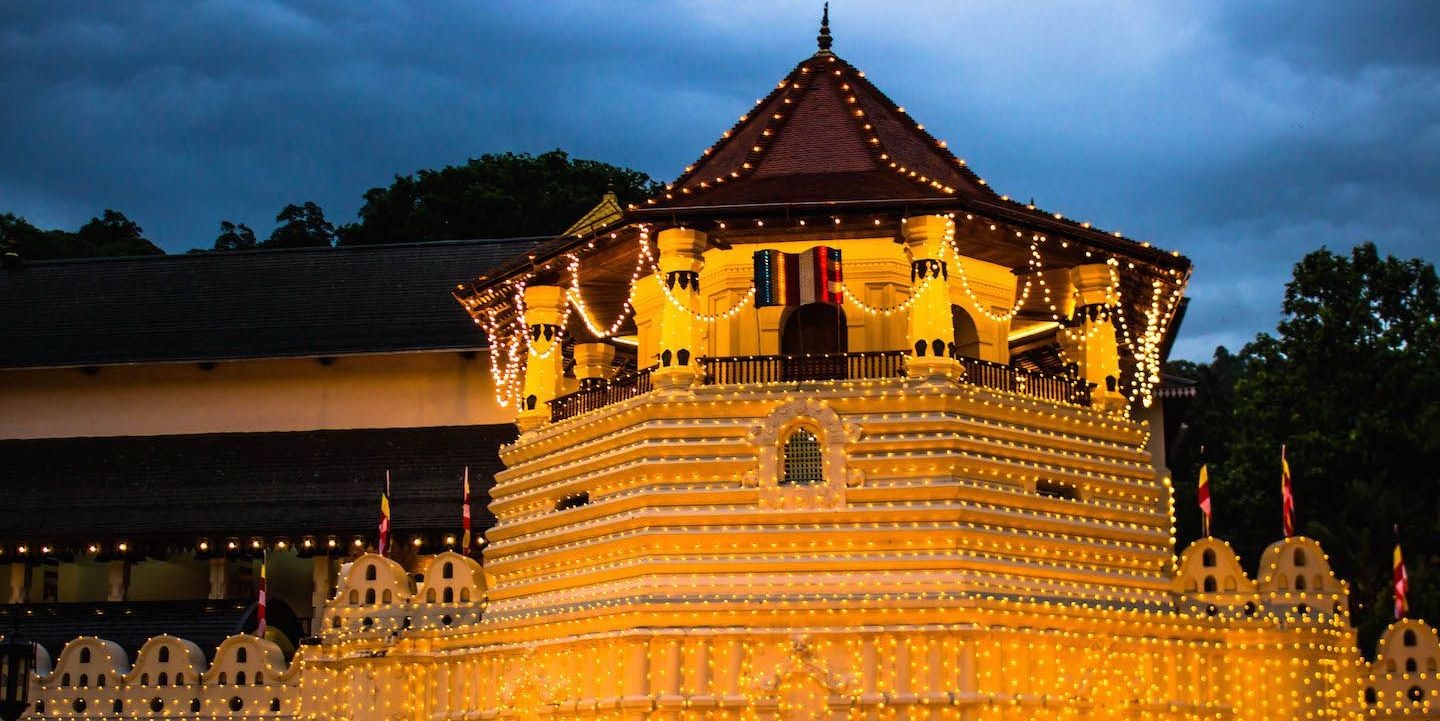
Key Sites of the Ramayan Tour
-
Ashok Vatika: Now identified with the Hakgala Botanical Gardens near Nuwara Eliya, Ashok Vatika is said to be the garden where Sita was held captive by Ravana. It's a place of immense historical and mythological significance, with serene landscapes that are a treat to explore.
-
Sita Amman Temple: Close to the Hakgala Gardens lies the Sita Amman Temple, believed to be the spot where Sita prayed daily for Rama to rescue her. The temple is one of the few in the world dedicated to Sita and features statues of Rama, Sita, Lakshmana, and Hanuman.
-
Divurumpola Temple: This temple is said to be the place where Sita underwent the "Agni Pariksha" (trial by fire) to prove her chastity. It's now a popular place for local couples to swear oaths of fidelity and marry.
-
Ravana Falls and Ravana Caves: These sites near Ella are linked to several key events in the Ramayana. The Ravana Falls is believed to be where Sita bathed during her captivity, and the nearby caves are thought to be part of Ravana's kingdom, where he hid Sita.
-
Laggala: Identified as the place where Hanuman first spotted Sita in captivity, offering panoramic views of the surrounding area. The name Laggala is derived from the Sinhala term "Elagala", which means target rock.
-
Manavari Temple and Munneshwaram Temple: Near Chilaw, these temples are associated with Lord Rama. According to legend, after Rama's victory over Ravana, he prayed to Shiva at these spots to cleanse himself of any sins he might have incurred during the battle.
Tips for Travelers
-
Respect the Culture: Many of these sites are sacred to local people and visitors are expected to show respect, including dressing modestly and behaving appropriately.
-
Photography: Always ask for permission before taking photos, especially in and around temples.
-
Local Guides: Employ local guides who are knowledgeable about the Ramayana and the significance of each site to enhance your understanding and experience.
-
Weather Considerations: Plan your visit according to the weather; some sites might be more accessible during the dry season.
The Ramayan Tour in Sri Lanka is more than just a tourist excursion; it's an immersive experience into the epic tale of the Ramayana, set against the backdrop of Sri Lanka's stunning landscapes and historical sites. It offers a unique way to explore the country through a lens that combines myth, spirituality, and culture.
Climb Sigiriya
Climbing Sigiriya Lion Rock is one of the most awe-inspiring and unforgettable experiences you can have while visiting Sri Lanka. Often referred to as the "Eighth Wonder of the World," this ancient rock fortress rises dramatically from the central plains and is a testament to the island’s rich history and architectural prowess.
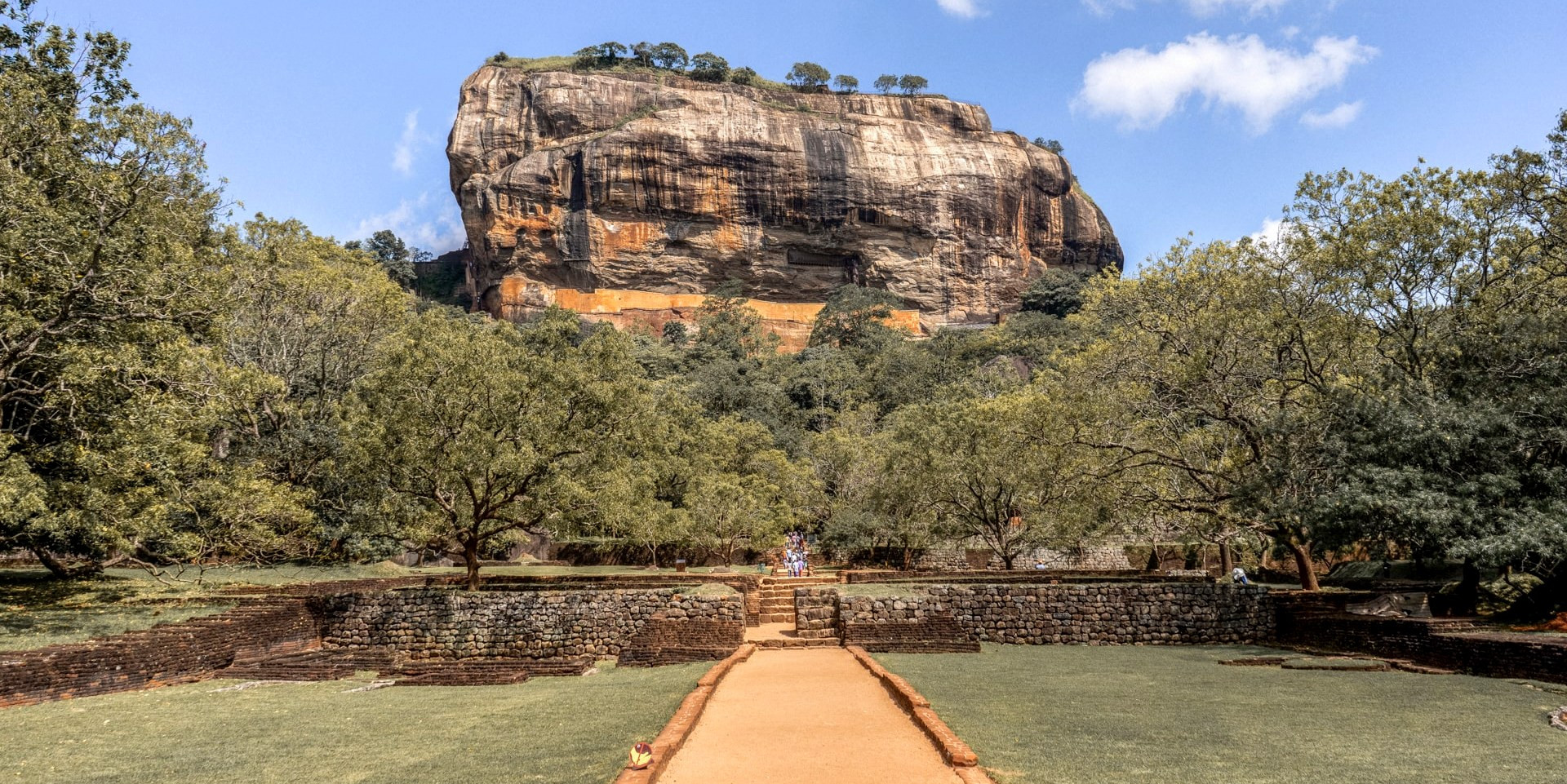
Overview of Sigiriya Lion Rock: Sigiriya, located in the Matale District near the town of Dambulla, was selected by King Kasyapa (477 – 495 CE) for his capital. He built his palace on the top of this rock and decorated its sides with colorful frescoes. On a small plateau about halfway up the side of this rock, he built a gateway in the form of an enormous lion, which is why the rock is often referred to as the Lion Rock.
Climbing Sigiriya
-
Approach: The journey begins with beautifully landscaped gardens and moats that lead to the base of the rock. The climb itself involves ascending a series of steep staircases and pathways. Along the way, you’ll pass through the famed Lion Gate, where massive paws still stand, providing a surreal entrance to the upper part of the rock.
-
Frescoes and Mirror Wall: As you climb, you will see the well-preserved frescoes painted on the rock surface. These ancient artworks depict celestial maidens and are considered to be some of the most important mural paintings of the ancient world. The Mirror Wall, once polished to a shine so that the king could see his reflection, is now inscribed with verses written by visitors to Sigiriya over the centuries.
-
The Summit: Reaching the summit of Sigiriya provides a breathtaking panoramic view of the surrounding jungle and farmland. The ruins of the palace on the summit include foundations of buildings, water tanks, and gardens, giving you a glimpse into ancient urban planning and architectural brilliance.
Tips for Your Climb
-
Best Time to Visit: Early morning or late afternoon is the best time to climb Sigiriya to avoid the heat of the midday sun and the crowds. The site opens at 7 AM, so starting early can help you enjoy a more serene experience.
-
Physical Preparation: The climb is moderately challenging, and it takes about an hour to reach the top, so it is advisable to be in good physical condition. Wear comfortable clothing and sturdy footwear.
-
Hydration: Bring water along with you, as the climb can be strenuous, especially in the heat.
-
Tickets: Purchase your entrance tickets early, especially during peak tourist seasons, to avoid long waiting times.
-
Respect the Site: Sigiriya is a UNESCO World Heritage Site. It is important to respect the environment and cultural heritage by not littering or damaging the frescoes and structures.
Climbing the Sigiriya Lion Rock is more than just a physical challenge; it's a journey back in time. It offers insight into the creative and sophisticated civilization that existed in Sri Lanka over a thousand years ago. For anyone visiting Sri Lanka, this climb is a must-do activity that combines adventure, history, and unparalleled natural beauty.
Ideal Time for Things to do in Sri Lanka
Sri Lanka’s tropical climate is generally characterized by high humidity and temperatures, along with distinct dry and wet seasons that vary across different parts of the island. Here's a detailed breakdown of the seasons in Sri Lanka:
First Inter-Monsoon Season (March to April)
-
Climate: Warm and relatively dry, but short, sporadic showers can occur.
-
Characteristics: This period is generally considered a shoulder season, with fewer tourists and generally pleasant weather, making it a good time for travel and outdoor activities, especially in the central highlands and cultural triangle.
Southwest Monsoon (Yala Monsoon) (May to September)
-
Climate: The southwest monsoon affects the west and south coasts and the central highlands. This season brings heavy rainfall to these areas.
-
Characteristics: Despite the rain, the northern and eastern parts of the island experience better weather, making them suitable for beach activities and travel during this time.
Second Inter-Monsoon Season (October to November)
-
Climate: Variable weather across the island, with occasional thunderstorms and heavy rainfall.
-
Characteristics: This season can be unpredictable, with both sunny days and significant rain showers. It’s a transitional period between the two monsoon seasons.
Northeast Monsoon (Maha Monsoon) (December to February)
-
Climate: The northeast monsoon affects the north and east of the island, bringing rain to these areas, while the south and west coasts remain relatively dry and sunny.
-
Characteristics: This is the peak tourist season, especially on the southern and western coasts, where the weather is ideal for beaches, wildlife safaris in the southern national parks, and cultural visits.
Understanding these seasonal variations can help you plan your visit to Sri Lanka, ensuring that you experience the best the island has to offer in terms of weather, activities, and cultural events.
Sri Lanka is a treasure trove of diverse experiences, perfect for every kind of traveler. From the sun-drenched beaches and majestic Sigiriya Rock to the rich wildlife safaris and serene tea estates, this island offers a stunning array of unforgettable adventures. The cultural depth of Sri Lanka, highlighted through vibrant city life, ancient historical sites, and traditional Ayurvedic spas, enriches every visit. With Relax Getaways, explore the warm hospitality of Sri Lanka in comfort and style. Whether seeking adventure, relaxation, or cultural enrichment, Sri Lanka promises a memorable journey filled with discovery. Plan your trip now and experience the enchanting beauty of this vibrant island nation.
FAQs for Things to do in Sri Lanka
Q: What is the best time to visit Sri Lanka for beach activities?
A: The optimal time for beach activities on the west and south coasts is from December to March, while the east coast is best visited from April to September, reflecting the island's monsoonal patterns.
Q: Are there any specific cultural sites that are a must-see in Sri Lanka?
A: Absolutely. Key sites include the Ancient City of Sigiriya, the Sacred City of Anuradhapura, and the Temple of the Tooth in Kandy. These UNESCO World Heritage Sites are pivotal for understanding Sri Lanka's historical and cultural heritage.
Q: What are some recommended activities for adventure seekers in Sri Lanka?
A: Adventure seekers should consider trekking in the Hill Country, surfing in Arugam Bay, white-water rafting in Kitulgala, and embarking on a wildlife safari in Yala National Park.
Q: Can you recommend any family-friendly activities in Sri Lanka?
A: Families will enjoy elephant safaris in Minneriya National Park, visiting the Pinnawala Elephant Orphanage, exploring the Dehiwala Zoo, and relaxing on the beaches of Unawatuna and Bentota.
Q: What are some unique experiences in Sri Lanka for nature lovers?
A: Nature enthusiasts should explore the Sinharaja Forest Reserve for bird watching, the Central Highlands for scenic hikes, and engage in whale watching in Mirissa or Trincomalee, depending on the season.
Q: How can visitors best experience local Sri Lankan cuisine?
A: To truly experience local cuisine, dine at traditional restaurants, sample street food, and consider taking a local cooking class. Must-try dishes include rice and curry, hoppers, kottu roti, and the abundant local seafood.
Q: What is the significance of the Ramayan Tour in Sri Lanka?
A: The Ramayan Tour explores locations linked to the Hindu epic, the Ramayana, believed to be part of the story's setting. Sites like Ashok Vatika and the Sita Amman Temple offer a mix of spiritual, historical, and cultural insights.
Q: What are some tips for responsible tourism in Sri Lanka?
A: Practice responsible tourism by respecting local customs, supporting local businesses, avoiding single-use plastics, and adhering to environmental guidelines, especially in protected areas.
Q: What should tourists know about safety while exploring Sri Lanka?
A: Tourists should watch over their belongings, heed local safety advice, especially in less frequented areas, and consult travel advisories from their home countries. It's often safer to hire a local driver or guide for navigating the roads.
Q: Are there any health precautions travelers should take when visiting Sri Lanka?
A: Travelers should stay up-to-date with routine vaccinations and consider additional shots for hepatitis A and typhoid. Drinking tap water should be avoided, and mosquito repellent is essential for protection against mosquito-borne diseases like dengue.
For the Sri Lanka Tour, please click here.
If you are looking for different kinds of Sri Lanka Packages, feel free to contact us.
